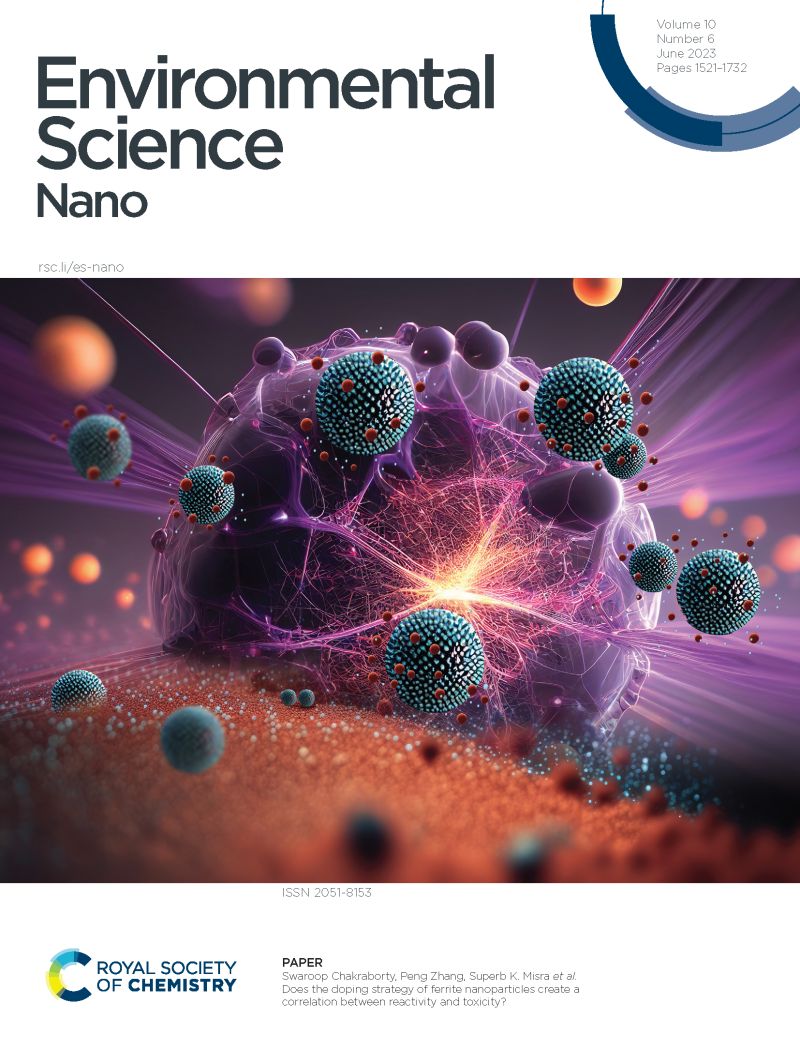Soil-based zeolite and metal oxide nanomaterial application alters reactive Nitrogen losses and lettuce (Lactuca sativa L.) growth
IF 5.1
2区 环境科学与生态学
Q1 CHEMISTRY, MULTIDISCIPLINARY
引用次数: 0
Abstract
Excessive nitrogen fertiliser use has resulted in reactive nitrogen losses to the environment through gaseous N emissions, like N2O, resulting in agriculture being a major anthropogenic source of N2O gas emissions globally. Using engineered nanomaterials to deliver reactive nitrogen can aid in more efficient nutrient delivery to crops, maximising yield and crop quality, while minimising reactive losses to the environment. ZSM-5-15, a nano-zeolite, increased cumulative N2O emissions by 134% when applied in combination with a 50% dose of conventional nitrogen fertiliser. This is theorised to be through ion exchange of ZSM-5-15’s extra-framework NH4+ ion load being released, allowing nitrifying microbes to act on the newly released NH4+ and increase N2O emissions. BEA-19, a similar zeolite to ZSM-5-15 but with a slightly altered Si:Al ratio, size and charge, causes no increase in N2O emissions. While ZSM-5-15 increases reactive N emissions it also drives improved lettuce growth, with 13% more biomass accumulation compared to a half dose of conventional fertiliser. Ce0.75Zr0.25O2, a nano-metal oxide, improves growth by 6% and maintains the nutritive quality of lettuce, with higher Zn, Cu, Mg, K, Fe and Mn contents, without increasing N2O emissions. Nano-Ce0.75Zr0.25O2 transforms in soil to form CeO2 and Ce0.9Zr0.1O2, leaching Zr4+ ions some of which partly form ZrCl4. These compounds may then act on lettuce roots and soil microbes independently. These results indicate how nanomaterials may impact reactive nitrogen emissions through effects on soil microbial communities.土壤基沸石和金属氧化物纳米材料的施用改变了活性氮的损失和生菜的生长
过量使用氮肥导致活性氮通过气态氮排放(如N2O)流失到环境中,导致农业成为全球N2O气体排放的主要人为来源。使用工程纳米材料输送活性氮可以帮助更有效地向作物输送养分,最大限度地提高产量和作物质量,同时最大限度地减少对环境的反应性损失。ZSM-5-15是一种纳米沸石,当与50%的常规氮肥联合施用时,N2O的累积排放量增加了134%。从理论上讲,这是通过ZSM-5-15的框架外NH4+离子负荷被释放的离子交换,允许硝化微生物作用于新释放的NH4+并增加N2O排放。BEA-19是一种与ZSM-5-15相似的沸石,但Si:Al比、尺寸和电荷略有改变,没有引起N2O排放量的增加。虽然ZSM-5-15增加了活性氮的排放,但它也促进了生菜的生长,与一半剂量的传统肥料相比,生物量积累增加了13%。Ce0.75Zr0.25O2是一种纳米金属氧化物,在不增加N2O排放的情况下,具有较高的Zn、Cu、Mg、K、Fe和Mn含量,可促进生菜生长6%,保持生菜的营养品质。纳米ce0.75 zr0.25 o2在土壤中转化为CeO2和Ce0.9Zr0.1O2,浸出Zr4+离子,部分Zr4+离子形成ZrCl4。这些化合物可以独立作用于生菜根部和土壤微生物。这些结果表明纳米材料是如何通过对土壤微生物群落的影响来影响活性氮排放的。
本文章由计算机程序翻译,如有差异,请以英文原文为准。
求助全文
约1分钟内获得全文
求助全文
来源期刊

Environmental Science: Nano
CHEMISTRY, MULTIDISCIPLINARY-ENVIRONMENTAL SCIENCES
CiteScore
12.20
自引率
5.50%
发文量
290
审稿时长
2.1 months
期刊介绍:
Environmental Science: Nano serves as a comprehensive and high-impact peer-reviewed source of information on the design and demonstration of engineered nanomaterials for environment-based applications. It also covers the interactions between engineered, natural, and incidental nanomaterials with biological and environmental systems. This scope includes, but is not limited to, the following topic areas:
Novel nanomaterial-based applications for water, air, soil, food, and energy sustainability
Nanomaterial interactions with biological systems and nanotoxicology
Environmental fate, reactivity, and transformations of nanoscale materials
Nanoscale processes in the environment
Sustainable nanotechnology including rational nanomaterial design, life cycle assessment, risk/benefit analysis
 求助内容:
求助内容: 应助结果提醒方式:
应助结果提醒方式:


